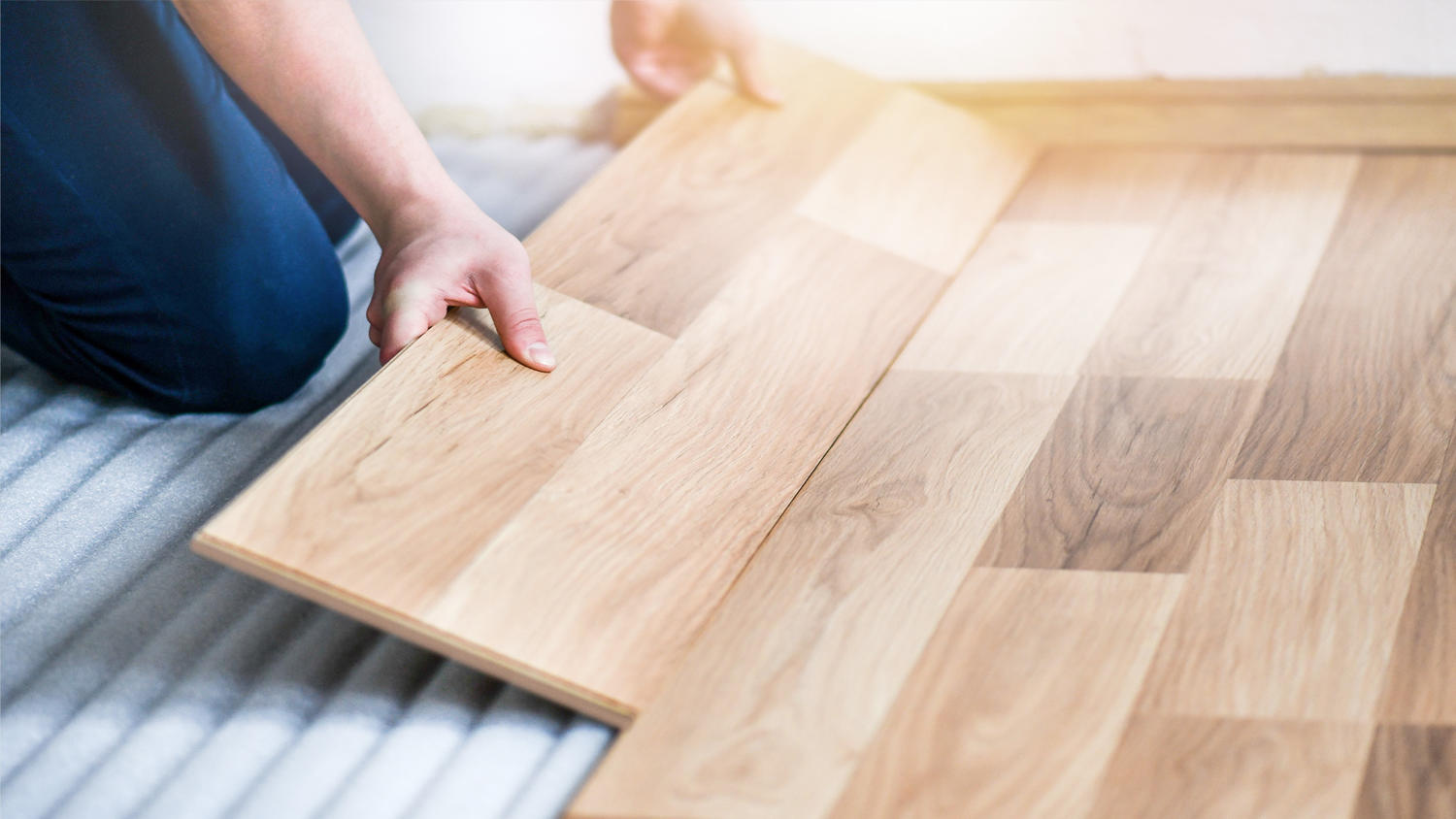Many homeowners choose laminate flooring because it is affordable and durable. The flooring is durable and easy to clean. It can also mimic the appearance of stone or hardwood. Installing laminate flooring yourself is a great way to save money when you’re looking to upgrade your home. This simple guide will help you install laminate flooring as a professional.
You will need
Gather all necessary materials and tools before you start:
- Flooring laminate planks
- Underlayment: foam or cork
- Measurement tape
- Lines of chalk and square
- The Jigsaw is a laminate cutter
- Hammer
- The Spacers
- The saw (used to cut planks).
- Tap block
- Pull bar
- Safety Glasses
- Utility Knife
- If your laminate type requires adhesive, you will need to purchase it.
Step 1: Preparing the room
Prepare the space first. Removing any old flooring, furniture, or baseboards is the first step. Vacuum and sweep the floor to make sure it is clean. Repair the subfloor if it is damaged or uneven. For laminate flooring to adhere well, it needs a dry and smooth surface.
Step 2: The Laminate is now ready to be acclimated.
Laminate flooring can expand and contract with changes in temperature. Let the planks of laminate flooring sit in the room for at least 48 hours before installation. The planks will adjust to your room’s humidity and temperature.
Step 3: The Underlayment is laid
Underlayment is essential for a smooth, quiet floor. The underlayment provides insulation and cushioning. The underlayment should be rolled out across the flooring, making sure the edges of the material are flush against the wall. A utility knife is used to cut the underlayment according to the size of the room. When using several sheets, make sure the seams of all the sheets are pressed together.
Step 4: Plan Your Layout
Plan the layout before you begin installing the planks. Start by installing the first row parallel to the wall that is the largest in the room. The floor will look natural. Check that the rows of planks are all straight using a measuring tool. Trim the planks in the first row if the last one is too small. Allow for some expansion by leaving a gap of around 1/4 inch between the wall, and the planks.
Step 5: Begin the first row
Install the first row by locking it together. The tongue and groove system is used by most laminate planks. The tongue of the first plank should face the wall. Press down on the plank and insert the next one into the groove. As you continue along the wall make sure that the planks remain aligned. Tap them firmly into place with a hammer and tapping block.
The last plank is cut
You may have to trim the planks to make them fit. Use a plank to mark and cut the space. This job is best done with a jigsaw or laminate cutter. Keep in mind to keep a small space between the planks and the wall.
Step 7: Begin the second row
Start by cutting your first plank in such a way that the joints at the ends do not line up with those of the previous row. It creates a natural-looking staggered appearance. Then, gently press the planks together. If necessary, continue locking in the planks with a tap block and hammer.
Step 8: Continue laying the planks
Continue the same process for all the other rows. Staggering the seams will prevent the joints from lining up on adjacent rows. The floor will be stronger and look better. Before moving on to the next plank, make sure that each one is firmly locked in place.
Step 9: Cut Around Obstacles
You may have to cut special pieces as you get closer to doors, vents, or other obstructions. Mark the plank and measure the distance, before cutting it with a jigsaw. Take your time and make sure you get the right cuts. You might need to cut multiple times to accommodate complex obstacles.
Step 10: The Last Row
It is often necessary to trim the last row of boards to make it fit. Cut the planks the right width after measuring the gap. The last row can be gently tapped into place using a pull bar. Make sure that all planks have been firmly secured and that there is no space between them.
Step 11: Install the Baseboards
After the floor is laid, you can add your baseboards. Install new baseboards to fill in the gap left by expansion or reinstall the original ones. The baseboards should be nailed to the wall and not the flooring. The laminate can expand and contract with no effect on the baseboards.
Step 12: Cleaning up
After installing your laminate flooring, thoroughly clean it. Vacuum or sweep to get rid of any dust. To remove dust from the flooring, wipe it down with a wet cloth. Use a dry mop instead of a wet one, because excessive moisture can damage laminate.
Some Tips to Success
- Check that you are always leveling the boards as you work. Make sure that everything is leveled by using a level.
- Do not forget to allow expansion gaps all around the perimeter. It is important to prevent the laminate from warping as a result of temperature fluctuations.
- It can be useful to have another person assist you with layout and installation if your room is large.
Conclusion
It is easy to install laminate flooring. You can get professional results by following these simple steps without having to spend a fortune on the installation. You can have an amazing new floor by using the correct tools and preparing your house properly. Enjoy the process!

